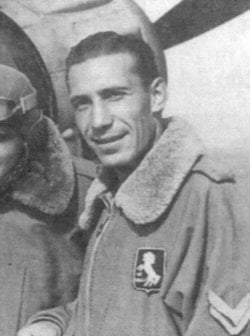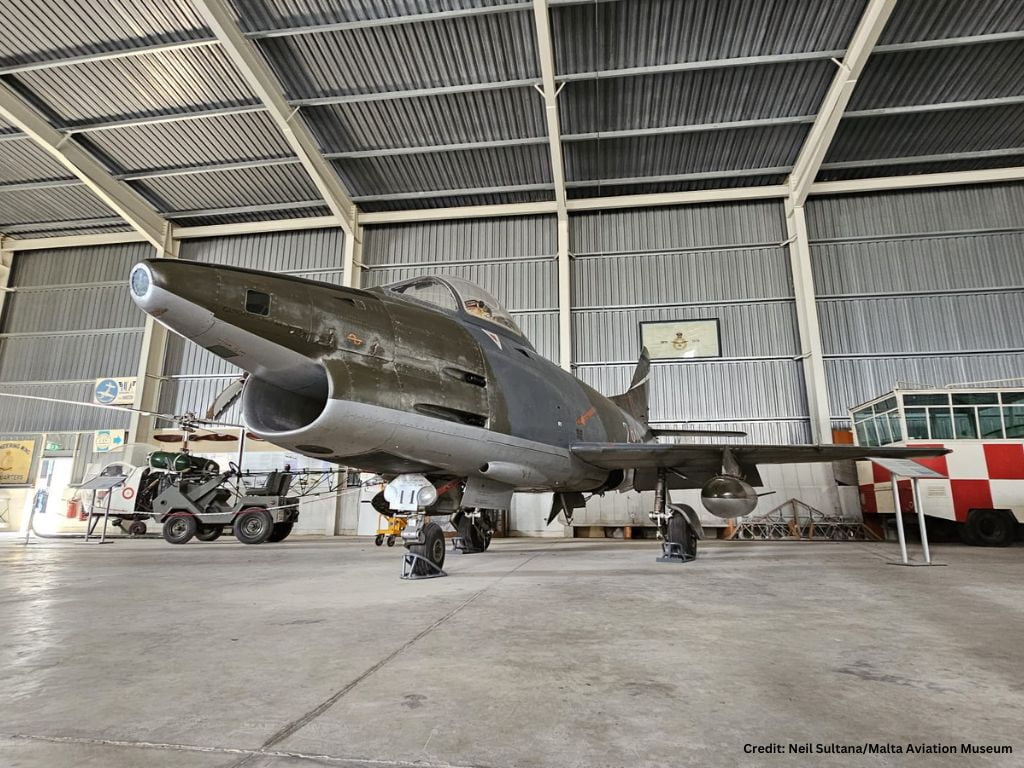Malta’s Hurricane Chronicles: From Arrival to Reinforcements, the Vital Role of Hawker Hurricanes in Defending the Mediterranean Island during World War II.
By Richard J. Caruana
Malta’s first pair of Hurricanes arrived early on June 21, 1940, accompanied by a Hudson flown by Flg Off G.V.W Davies; another pair landed at 1300 hrs, accompanied by three Blenheims. These aircraft were en route to Alexandria from Medjez, in Tunisia and formed a small part of the whole delivery which actually was to consist of eight aircraft. Two more arrived in the afternoon and the last pair, which had experienced considerable technical problems, arrived after sunset.
Of these, two were damaged by adventures in Tunisia and the Hurricane flown by Pit Off R.H Barber had to be fitted with a make-shift tail skid when the original tailwheel was lost at Marignane. The sight of eight Hurricanes Mk. I near the ageing Gladiators was too tempting for Maynard to let go of them. His intervention with Air Chief Marshal Sir Arthur Longmore, AOC-in-C Middle East, to keep some of them on the island as a relief to worn-out Gladiators, was miraculously accepted.
Five were detailed to stay on, consisting of Hurricanes P2614, 2623,2629,2645 and 2653 together with their pilots: Flg Off Taylor, Pit Off R.H Barber, Pit Off A.G McAdam, Pit Off Balmforth and Pit Off W.R.C Sugden. The Hudson, crewed by Flg Off Davies and Flt Lt Cooper, was also kept at Malta and was to be used for a number of reconnaissance flights.
An Improvement
Born as the “Fury Monoplane” project, the Hurricane was another product of Sir Sydney Camm’s stable at Hawker’s. During its design stage in 1934 Camm rightly focused on the need for a very heavy rate of firepower due to the speeds at which the monoplane was expected to operate (not to mention the fact that the Messerschmitt Bf.109 was already on the list of prospective opponents.) The eight-gun battery was a formidable armament at the time of the Hurricane’s first flight in November 1935. With the introduction of the Merlin III engine came a major redesign of the wings which were now metal-clad instead of being fabric-covered.
Operation “Hurry“
The delivery of the first twelve Hurricanes for Malta was of great significance. It indicated a change of policy at the War Office after a half-hearted start; the Chiefs of Staff now considered the Island vital in the fight for supremacy in the Mediterranean, especially in cutting off Axis supplies from Europe to North Africa. Operation Hurry was of such importance that it was shrouded in great secrecy. Fit Lt A.J Trumble recounts the events: “On July 21, 1940, the aircraft were carried by lighter to the docks and craned aboard the small aircraft carrier Argus which was lying in drydock. On the next day, the Argus sailed down the Clyde to Greenock where we met up with our escorts, still not knowing where we were heading for. On board, we were given the designation of N° 418 Flight. We arrived at Gibraltar at the end of July where we learned that our destination was Malta.”

Hurricanes in Action
The new arrivals were operational on August 3, but it was not until the 13th that they saw any real action. Italian Ju.87 Stukas performed their first attack on Malta on September 4 but it was on the 17th that the Hurricanes scored against this type. Barber took off with two other Hurricanes and pressed home an attack against a Ju.87 from 236ª Squadriglia which he later saw crashing into the sea near Filfla. Woods shot down an escorting CR.42, whose pilot managed to bale out safely.
At the end of the year, the RAF’s fighter strength at Malta consisted of about 16 Hurricanes of N° 261 Sqn together with four Gladiator survivors. The desultory attacks by the Regia Aeronautica against the major targets of Luqa, Ta’Qali and Hal Far, together with the dock area, were unable to check the convoys that reinforced Malta between September and November. But this situation changed dramatically with the Lutwaffe’s arrival in Sicily. Towards the end of December X Fliegerkorps under the command of General der Flieger Hans Geisler arrived in Sicily for operations against Malta.
On January 6, 1941, Operation Excess left Gibraltar under Force H with three supply ships for Greece and one for Malta. The convoy and escort came under heavy attack the following day. HMS Illustrious was hit six times and became a prime target until she entered Grand Harbour at 1800hrs on January 10. After a lull of six days, all hell broke loose on January 16 when the Luftwaffe returned to finish Illustrious in Malta’s dockyard. The Hurricanes were sent to intercept the Ju.87s and Ju.88s, five of which fell to the combined action of the defending fighters and anti-aircraft gunners. During the following days, attacks increased in ferocity and the bombing continued until the carrier left Malta on the 23rd. Notwithstanding the heavy Luftwaffe losses, the Hurricanes and Gladiators remained unscathed, but this was about to change with the deployment of the Messerschmitts Bf.109 commanded by Obit Joachim Muncheberg, which arrived in Sicily later in January.

Reinforcements
A serious attempt to reinforce Malta’s dwindling Hurricane force came on April 3 when Ark Royal and Furious launched 24 of the improved MK II. These were followed by 160 additional Hurricanes by the end of June, a number of which were passed on to North Africa. On May 9, MV Breconshire arrived in Malta with 50 airmen to service the newly-arrived Hurricanes. Maynard handed over to Air Vice Marshal H.P. Lloyd and on May 12, N°261 Sqn and N°1435 Flight were amalgamated to form N°185 Sqn under the command of Sqn Ldr P.W. Mould, DFC. N°249 (commanded by Sqn Ldr Barton, DFC) was based at Ta’Qali and was soon joined by N°261, leaving Luqa and Ta’Qali free for transiting aircraft flying to North Africa and the Middle East. On May 25, N°249 suffered heavily in terms of Hurricanes when Bf.109s of 7/JG 26 hit ten aircraft during a strafing raid when the RAF pilots were strapped to their seats at readiness.
A third Hurricane unit was formed on June 28, from personnel of N°46 Sqn. Designated N°126, this unit fell under the command of Sqn Ldr A.C Rabagliati, DFC, and joined the other Hurricane units at Ta’Qali. But it was to take the unit until August to be fully operational when 180 NCOs arrived from the UK to bring it up to full strength. It went into action for the first time on August 26, engaging Macchi C.200s of which three were claimed as destroyed. By October, it was taking the war to the enemy’s camp by performing fighter-bomber sorties on Comiso and Ragusa. However, their crowning glory was their part in the clean-up operation after an Italian E-boat attack on July 26, during which the attacking force was completely routed by the gunners on both sides of Grand Harbour. The Hurricanes claimed four E-boats and a Macchi C.200 escort destroyed.
Outclassed
Towards the second half of 1941 the Hurricane was outclassed, outrun and outgunned by most of the aircraft that the Axis was now throwing into the battle. By September it was facing the superb new Regia Aeronautica fighter the Macchi C.202S of the 4° Stormo and, later in December, those of 16° Gruppo. However, the death knell of the Hurricane was to be the arrival of II/JG 53 and II/JG 3 and their deadly Messerschmitt Bf.109F/Trop. In mid-January of the new year (1942) II Fliegekorps resumed its attack against Malta in force, in view of an invasion plan (Operation Herkules) projected for May. Though the invasion was cancelled for many reasons, not least of which being the appalling losses suffered in a similar operation against Crete, the defending Hurricanes found that they could do little against the superiority of the new Messerschmitt Bf.109F.
Bad weather proved a providential buffer to the attacks but it was clear that the only way Malta could survive was if reinforced with Spitfire, the type of aircraft which the defenders had been requesting for nearly a year. These arrived in March 1942 going mainly to N°126 and 249 Squadrons at Ta’Qali. It was not the end of the Hurricane saga however, as the older aircraft were to remain on the front line for many months to come, at the end of May the unit’s Hurricanes could be laid aside when re-equipment was completed.




